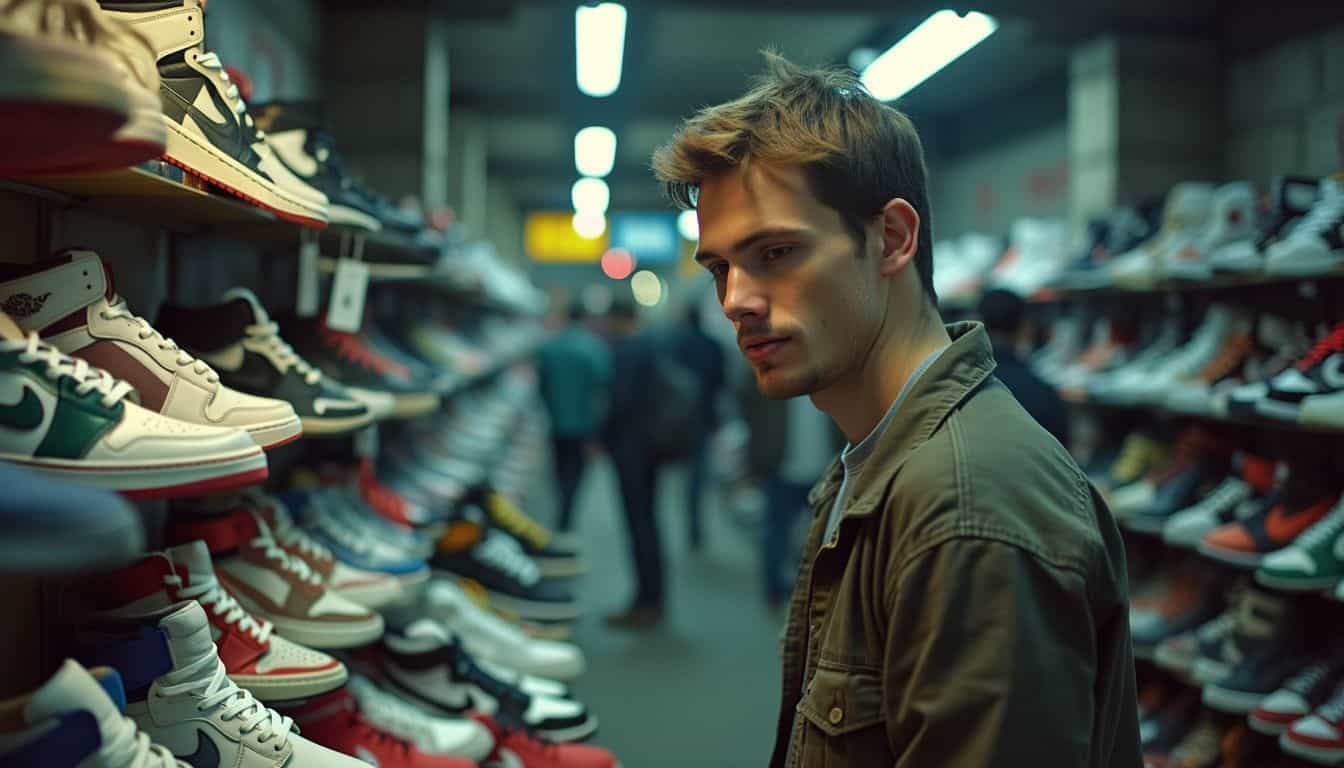Have you ever wondered about those cool kicks that look like designer shoes but cost way less? These are known as rep shoes. 2 Replica sneakers have stormed the fashion world, sparking debates about style and ethics. 3 This article will break down what rep shoes really are and reveal five eye-opening facts about these trendy copycats.
If you’re ready for some shoe-shopping wisdom, let’s lace up!
Key Takeaways
Rep shoes are replicas of designer sneakers, ranging from cheap counterfeits to high-quality “unauthorized authentic” versions made in the same factories as real ones.
The rep shoe market started in the 1980s and has grown into a billion-dollar industry, fueled by high prices for authentic sneakers and online global connections.
To spot fake shoes, check for inconsistencies in logos, stitching, materials, colors, shape, and sole patterns compared to authentic versions.
Buying and selling rep shoes raises legal and ethical concerns, including trademark violations and supporting poor labor practices.
Tools for verifying shoes include authentication apps, UV lights, online forums, and professional services that can help determine if sneakers are genuine or fake.
Table of Contents
Understanding
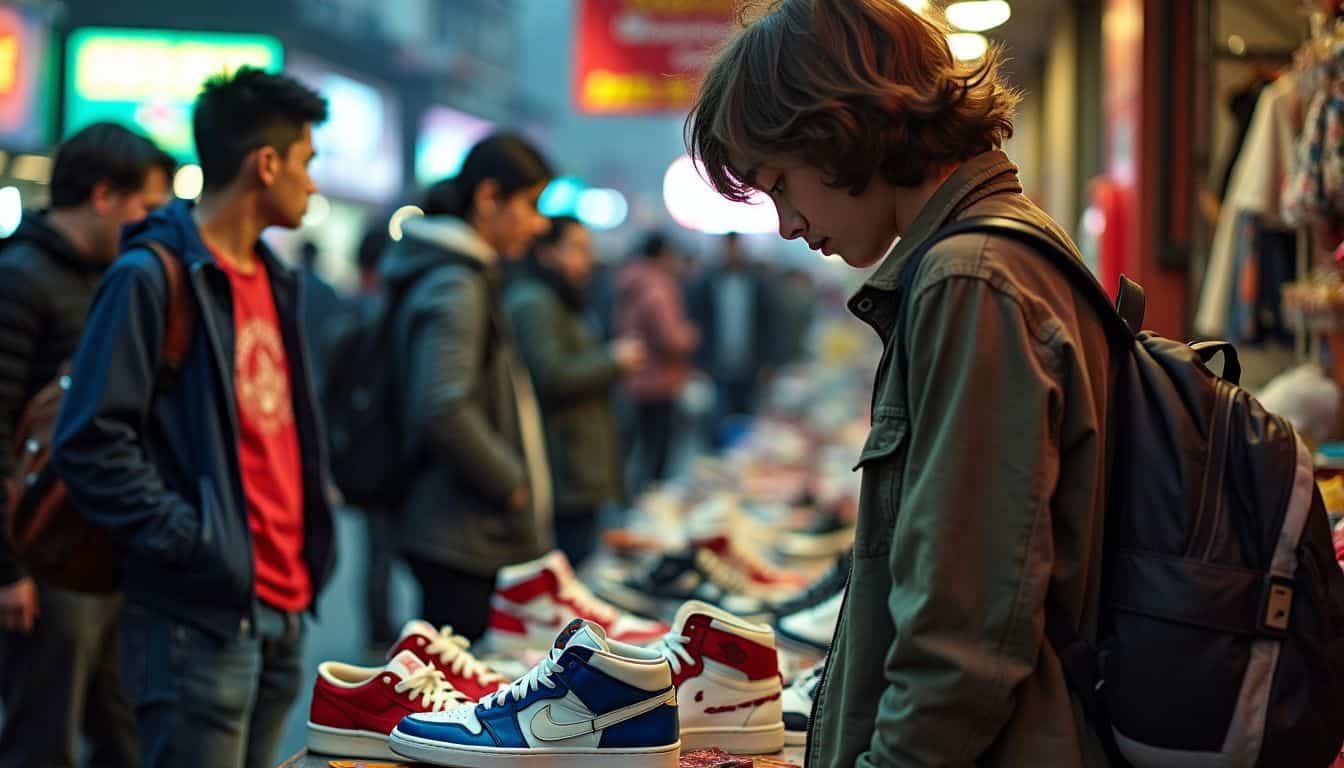
Rep shoes are more than just knock-offs; they’re a whole world of sneaker culture, blending authentic looks with budget-friendly prices. Let’s dive into the nitty-gritty of these trendy replicas; you might be surprised at what you find!
Types of Rep Shoes: Counterfeits vs. Unauthorized Authentic
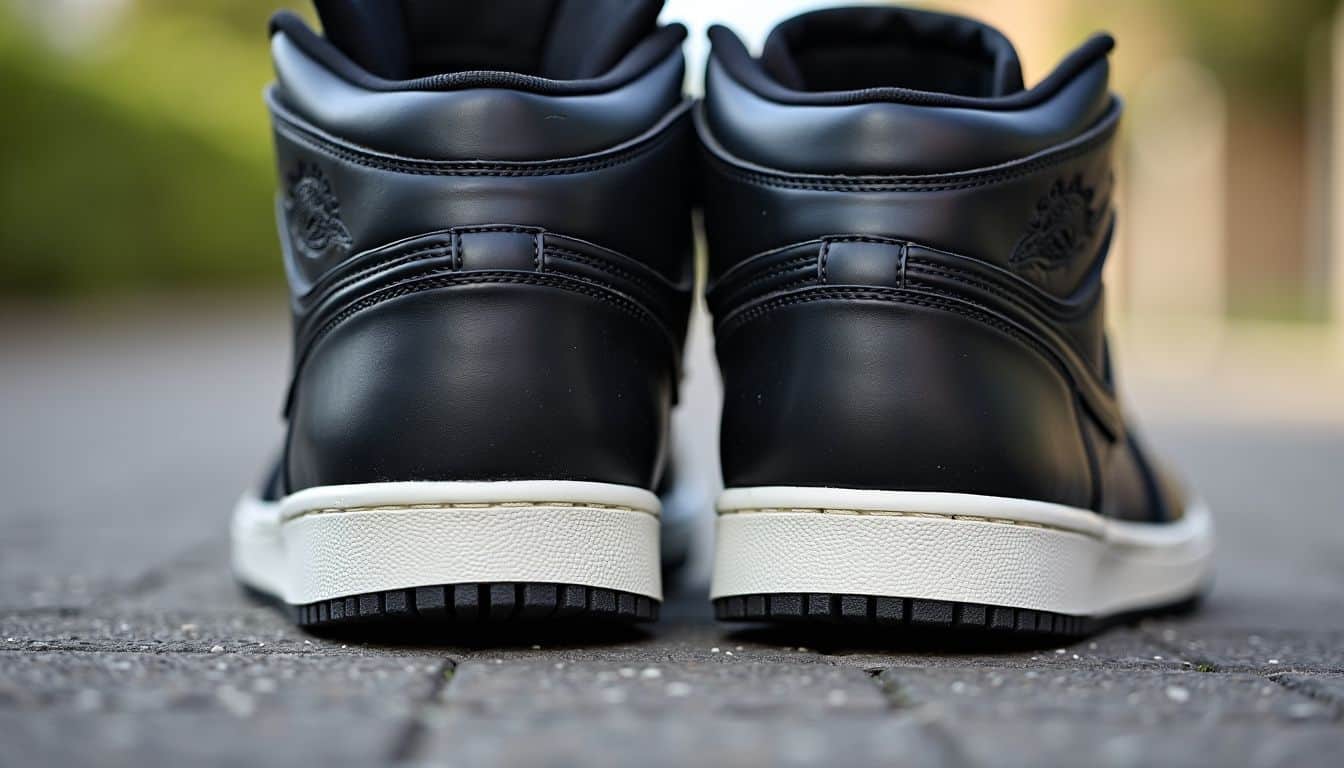
Rep shoes come in different varieties, each with its own style. Let’s break it down and see what’s available in replicas.
| Type | Description | Quality |
|---|---|---|
| Counterfeits | Cheap knockoffs | Poor materials, shoddy craftsmanship |
| Unauthorized Authentic (UA) | Made in same factories as real deals | Same materials, nearly identical to authentic pairs |
| Grade B | Authentic with minor flaws | Real deal, but slightly imperfect |
Counterfeits are at the bottom of the barrel. They’re cheap imitations that won’t fool anyone. The materials and craftsmanship are often subpar.
However, UA sneakers are made in the same factories as the real deal. The same materials and same processes are used, but without the official stamp of approval. You’d be hard-pressed to tell the difference.
1Grade B shoes are 100% authentic, but there are small intricacies, whether it’s a wonky stitch or a mismatched color.
According to Repskiller, telling the difference between these types can be tricky, but with a sharp eye and some insider knowledge, you’ll be handling the rep shoe scene like a pro in no time. 2
The Origins and Growth of Rep Shoes
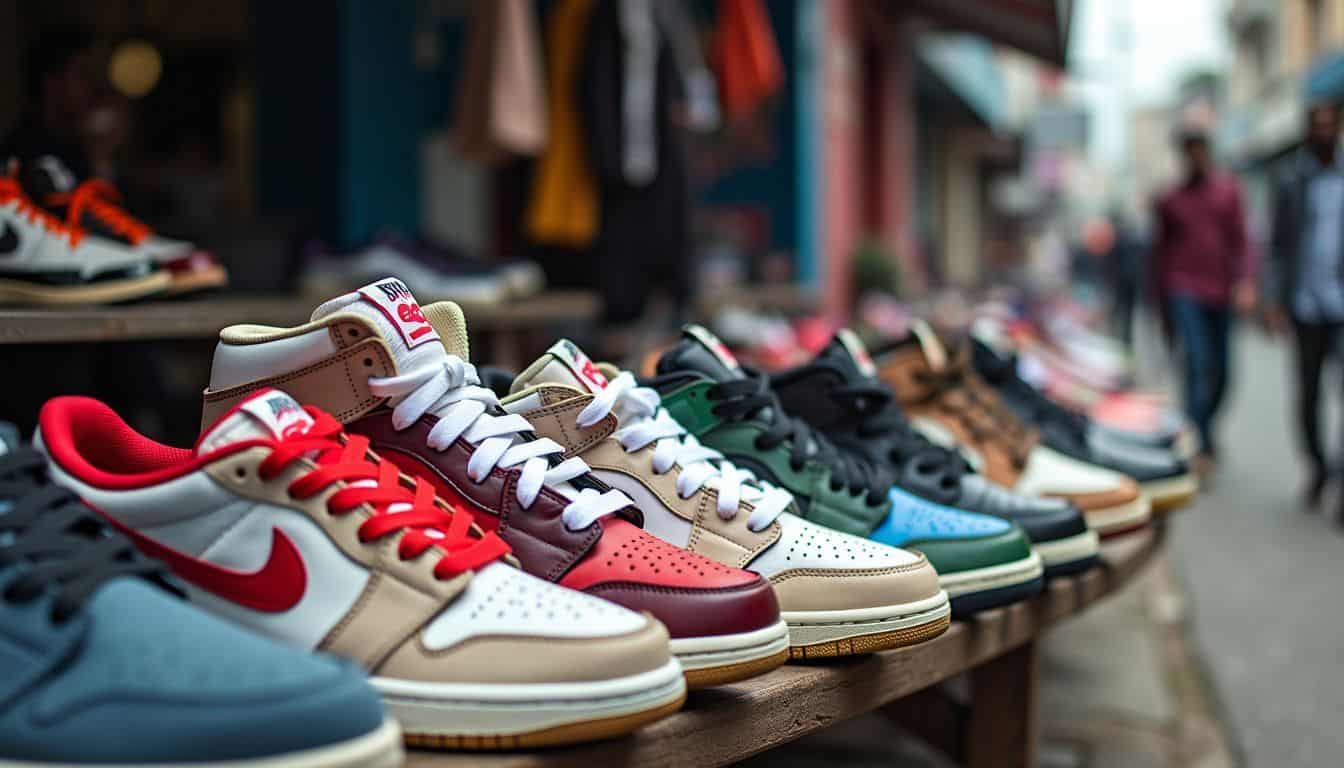
Rep footwear burst onto the scene in the 1980s. Sneaker culture was booming, and prices for authentic kicks skyrocketed. People wanted the look without breaking the bank, so clever makers started copying popular styles.
They used similar materials and designs to create budget-friendly alternatives. These early replicas were rough around the edges, but they filled a gap in the market.
Fast forward to today, and rep shoes have come a long way. The internet changed the game, connecting buyers and sellers globally. Social media fueled the hype, making sneakers a status symbol.
Now, rep makers use high-tech methods to create near-perfect copies. Some even argue that reps are better quality than originals. The rep shoe market has grown into a billion-dollar industry, rivaling authentic brands. 3
Rep shoes aren’t just fakes anymore. They’re a whole subculture. 4
How to Identify Rep Shoes
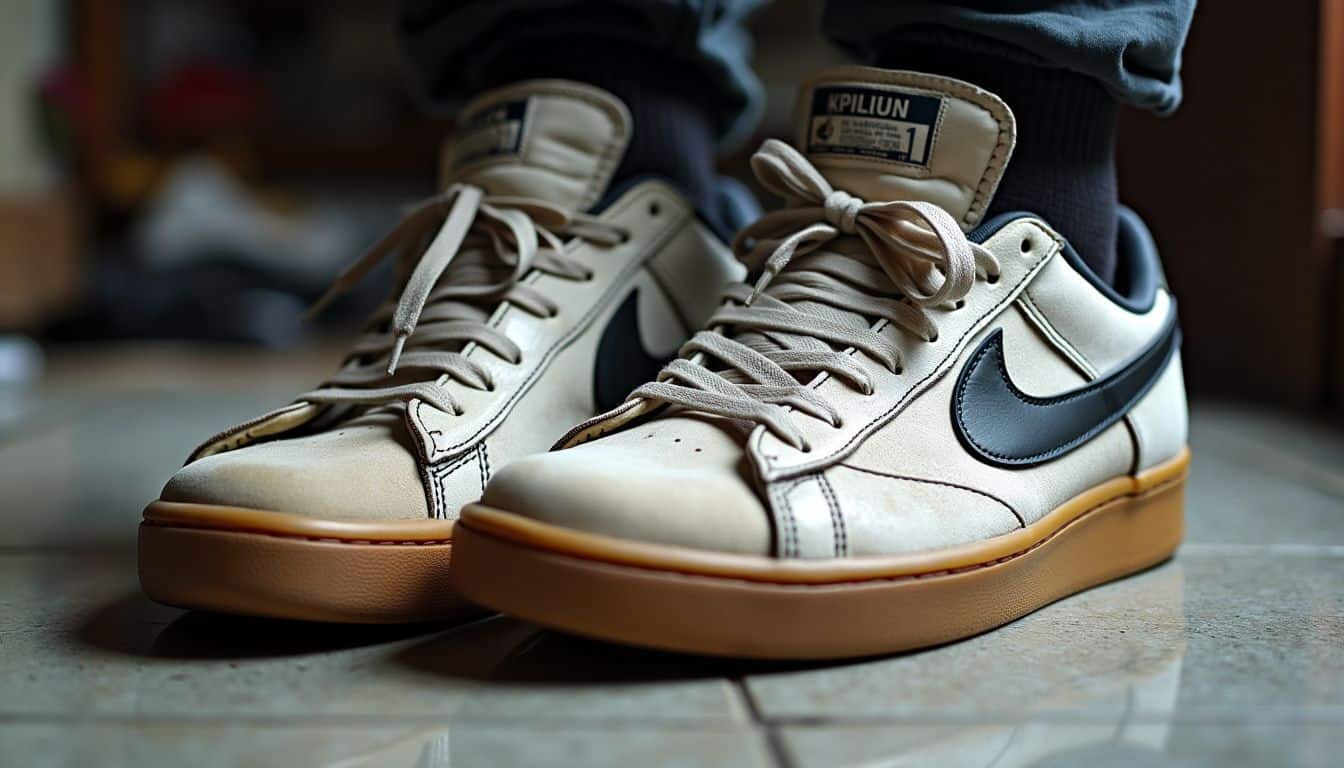
When trying to spot rep shoes, look for telltale signs like wonky stitching, off-color logos, and soles that don’t quite match up.
Examining the Exterior: Details and Placement
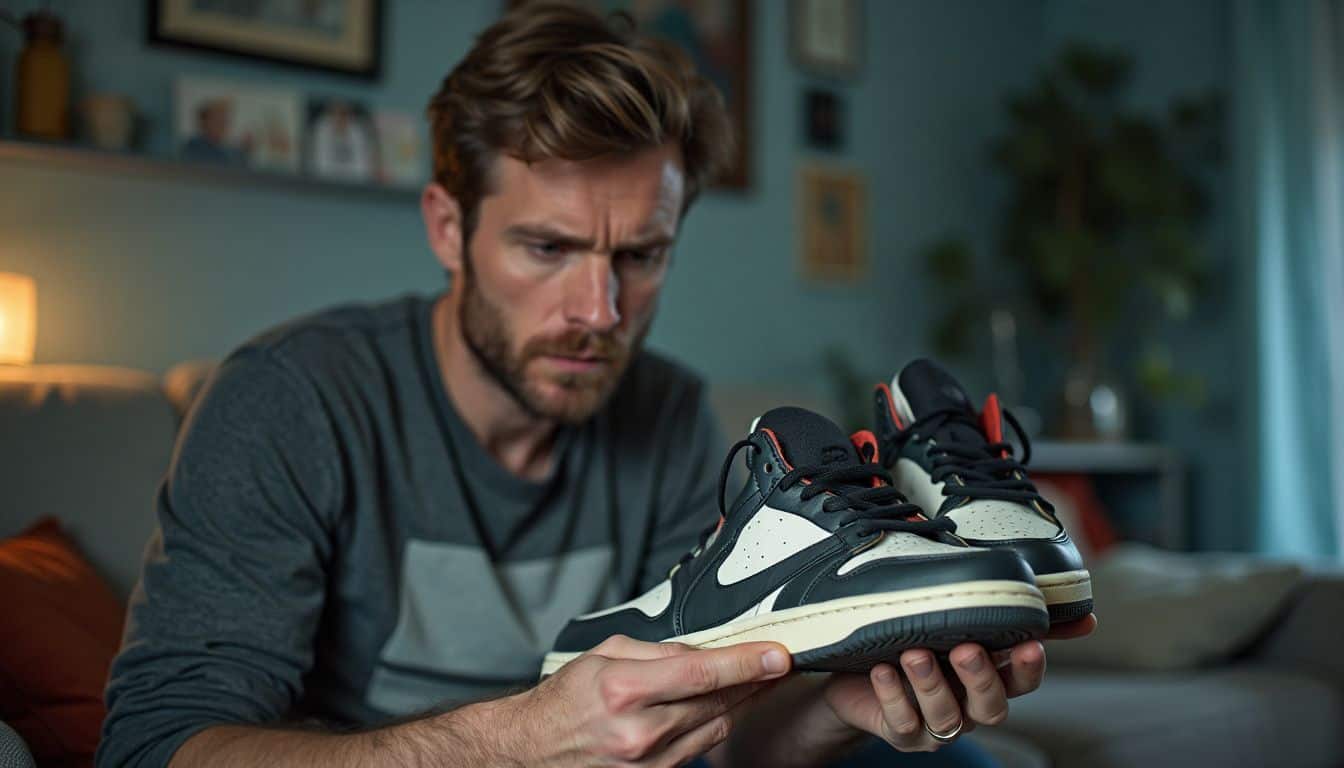
The key to spotting fake shoes is in the details. Here’s a breakdown of the main exterior features that separate authentic sneakers from imitations.
- Logo accuracy: Real sneakers have sharp, clear logos. The Nike swoosh, for example, should have a specific shape and width. If it looks off, you might have a fake.
- Stitch quality: Expensive sneakers have tight, even stitching. Messy seams or loose threads are a warning sign.6
- Material feel: Touch the shoe. Real leather feels smooth but slightly textured. Fakes often use cheaper materials that feel plastic-like or too smooth.
- Color uniformity: Authentic shoes have consistent coloring throughout. Small differences in shade might mean it’s not genuine.
- Front shape: The shoe’s front should have a specific form. For instance, real Air Jordans have a unique front shape that’s tough to copy exactly.
- Back firmness: Squeeze the back of the shoe. A real sneaker will have a solid, firm back. Fakes might feel weak or too bent. 5
- Tongue label details: Look closely at the tongue’s label. Real shoes have clear, sharp text and correct font thickness. If there’s fuzzy or misaligned text, you’re probably seeing a copy.
- Bottom pattern: Check the shoe’s bottom. Authentic sneakers have clear, well-defined tread patterns. Messy or oddly shaped soles often show they’re fake.
- Box label correctness: While not on the shoe itself, the box can tell you a lot. Real boxes have clear, properly lined-up labels with right product codes and size info.
Checking the Sole: Patterns and Branding
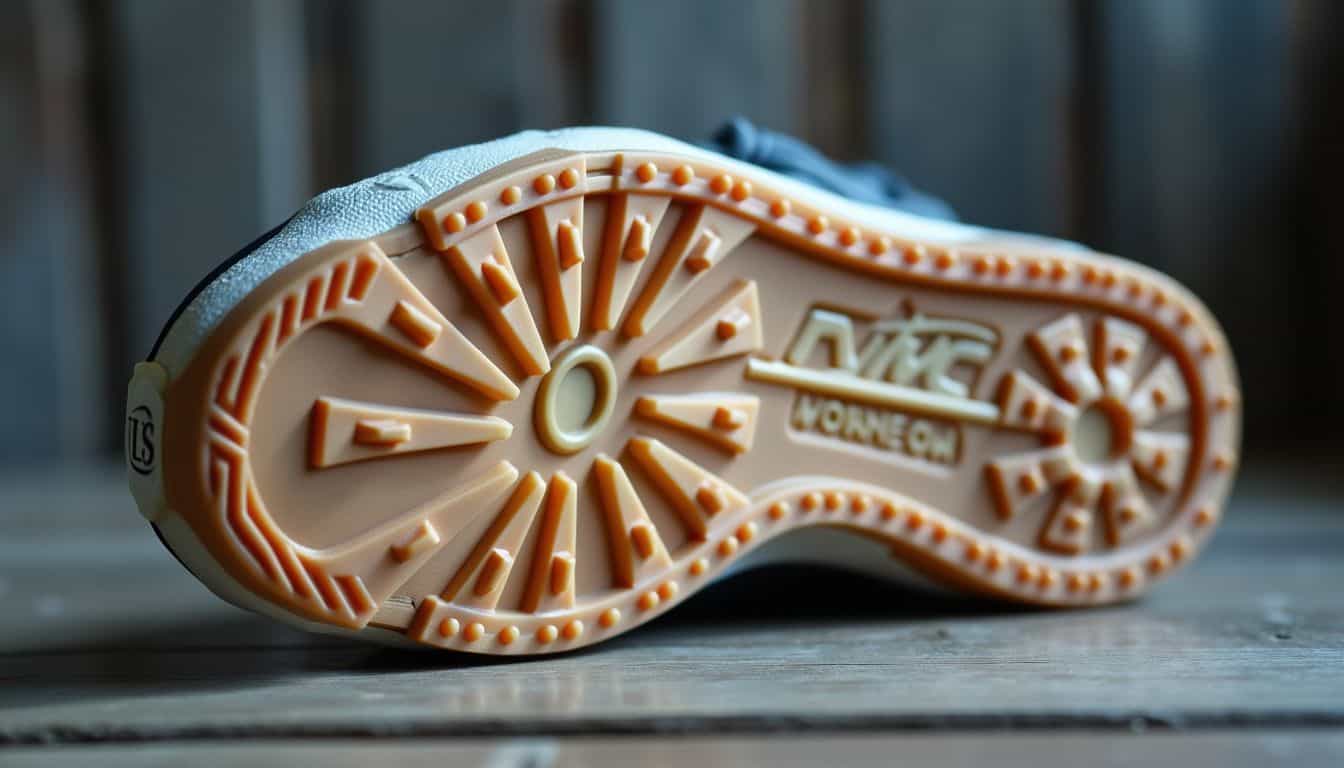
After examining the exterior, let’s move on to the sole. The sole of a shoe can reveal a lot about its authenticity. Here’s what to look for:
- Star pattern: Real sneakers have a uniform star or asterisk pattern on the sole. Fakes often show uneven spacing or density.
- Nike logo: Genuine Nike shoes display a standard ‘R’ in their logo. Knock-offs might have a wonky or off-center ‘R’. 6
- Branding clarity: Authentic soles feature crisp, clear branding. Replicas may have fuzzy or poorly printed logos.
- Material quality: High-end shoes use top-notch materials for their soles. Reps often cut corners with cheaper stuff.
- Tread design: Legit shoes have precise, well-defined tread patterns. Fakes might look sloppy or simplified.
- Weight: Original soles often feel heavier due to better materials. Rep shoes can be surprisingly light.
- Flexibility: Real soles bend at specific points. Counterfeit ones might be too stiff or too floppy.
- Smell: Weird as it sounds, authentic soles have a distinct rubber smell. Fakes can have a strong chemical odor.
- Deadstock shoes condition: If claiming to be unworn, the sole should look pristine. Any wear is a red flag.
- Hidden details: Some brands add secret markers on soles. Do your homework to spot these sneaky authenticity clues. 7
Assessing Material and Shape Inconsistencies
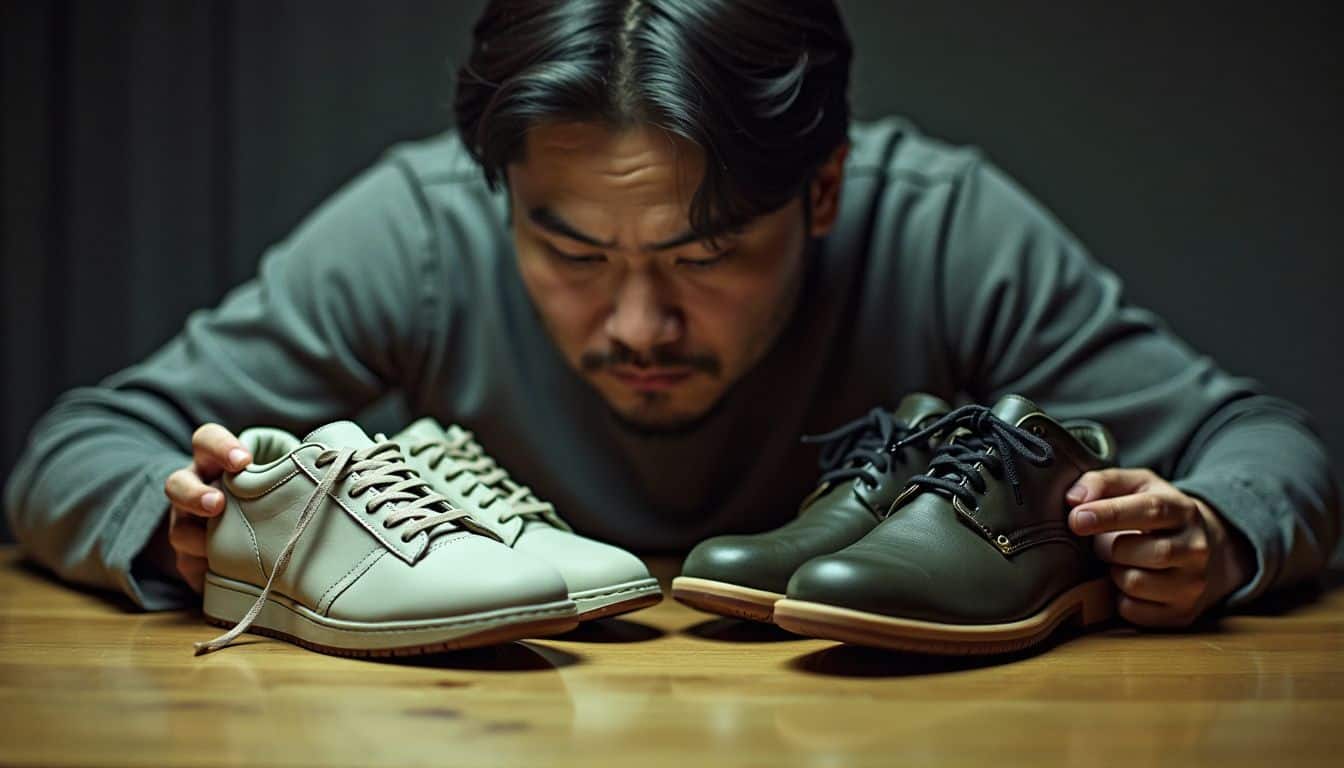
Spotting fake shoes isn’t rocket science. Let’s dive into the nitty-gritty of material and shape differences.
- Feel the leather: Real shoes use top-notch leather. It’s soft, smooth, and smells like… well, leather. Fakes often feel plasticky or rough. 6
- Check the stitching: Genuine kicks have clean, even stitches. No loose threads or wonky lines here, folks.
- Weigh it out: Authentic shoes have a solid heft. Knockoffs? Light as a feather, and not in a good way. 5
- Shape matters: Brand-name sneakers keep their form. Fakes might look saggy or misshapen.
- Logo lowdown: Real logos are crisp and clear. Counterfeit ones? Blurry, off-center, or just plain wrong. 6
- Sole searching: Flip those shoes over. Genuine soles have deep, precise patterns. Fakes? Not so much.
- Box it up: Even the shoebox can spill the beans. Authentic boxes are sturdy with sharp printing. Knockoffs? Flimsy with fuzzy text.
- Sniff test: Weird but true – real shoes don’t stink of chemicals. That funky smell? Red flag, gents.
Now, let’s talk about how to spot these fakes in the wild.
Legal and Ethical Concerns with Rep Shoes
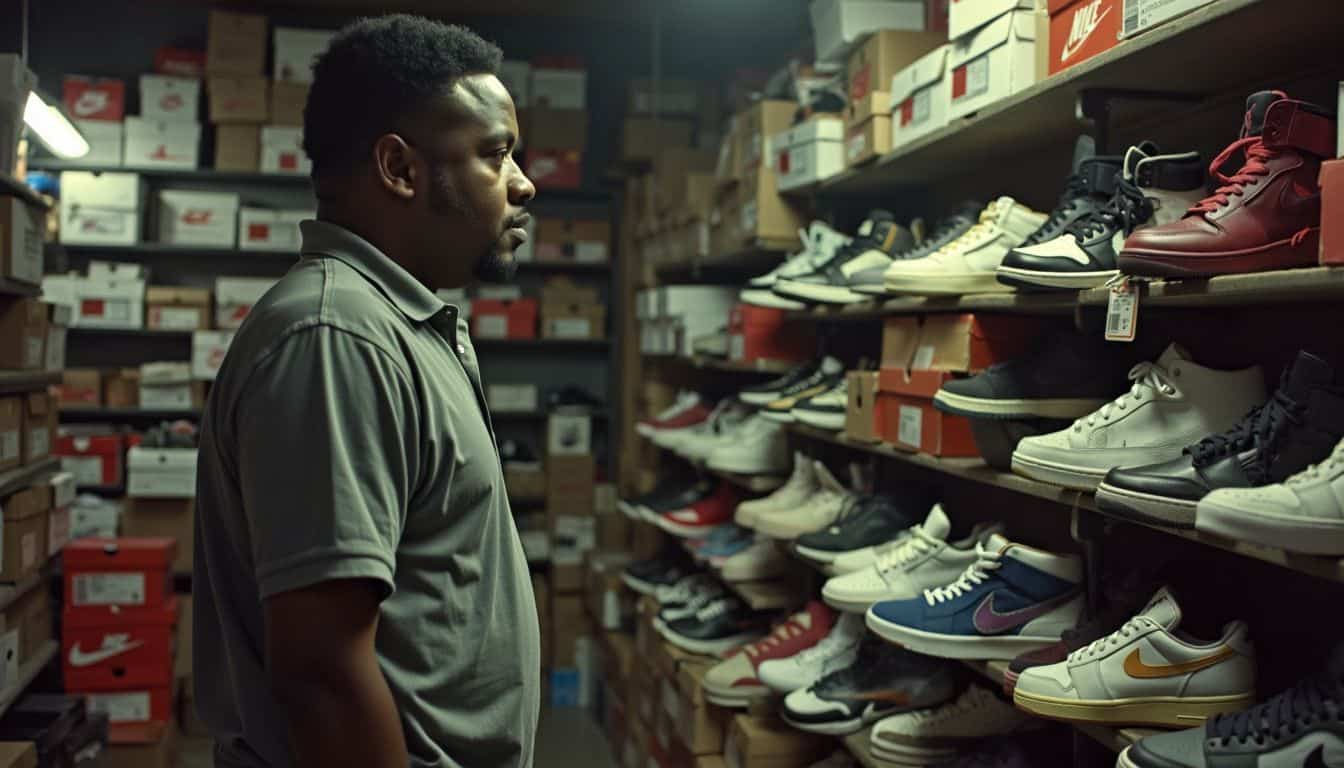
Rep shoes walk a fine line between fashion and fraud. They raise tricky questions about laws and morals that can leave buyers scratching their heads.
Trademark Issues and Compliance with Consumer Law
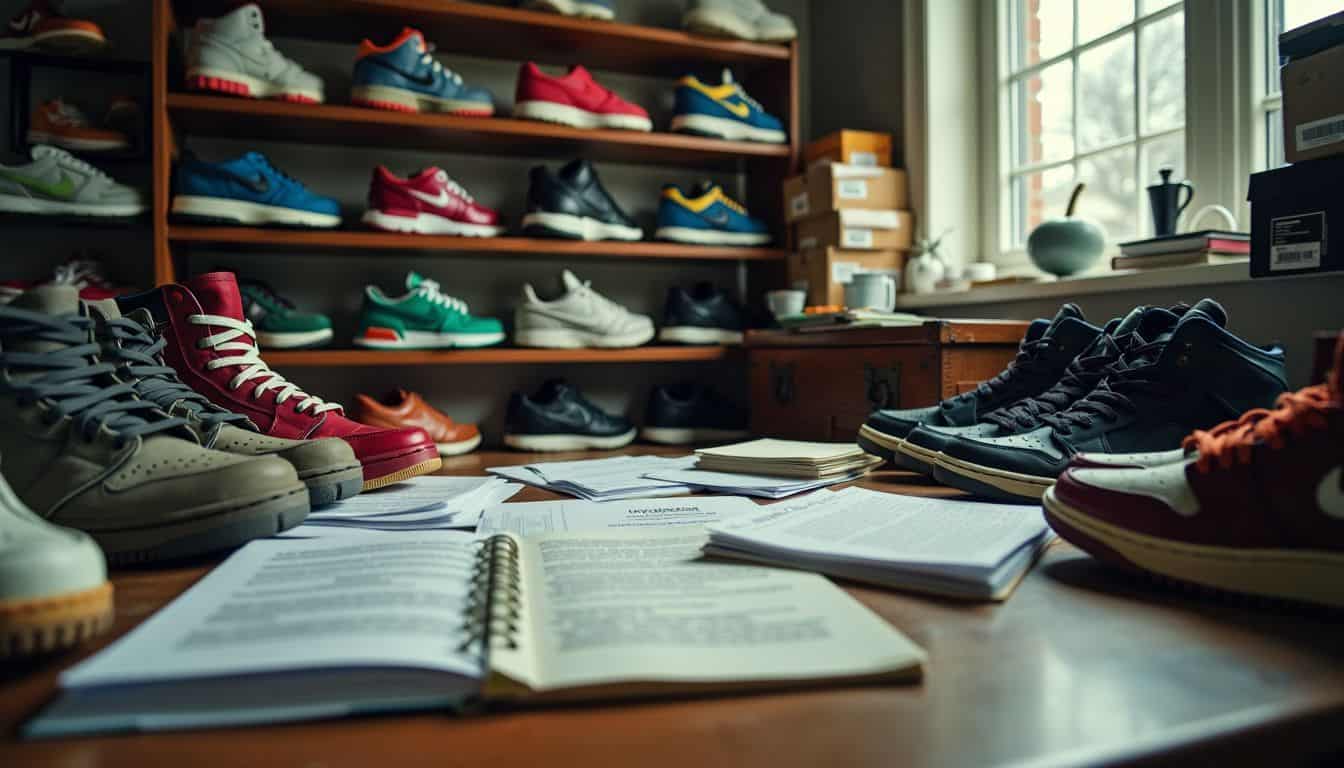
Rep shoes often walk a tricky legal line. Trademark laws shield brands from imitators. 9 These rules prevent others from using logos or designs that could mix up buyers. The OECD notes major financial hits due to counterfeit goods.
Knock-offs might also violate design patents. This spells trouble for both sellers and buyers of rep shoes.
Consumer laws factor in with rep footwear too. These guidelines aim to protect shoppers from scams. They require clear info about what people are buying. Passing off fakes as genuine? That’s a serious offense.
It can result in fines or even jail time. 8 As one expert puts it:
With replicas, not knowing isn’t an excuse – it’s a risk.
Ethical Dilemmas in Buying and Selling Rep Shoes

Buying rep shoes puts you in a tight spot. Sure, they’re cheaper, but at what cost? These knock-offs often come from factories with poor working conditions. 8 Workers might not get fair pay or safe spaces to do their jobs.
It’s like choosing between your wallet and your values. You might save cash, but you’re also backing shady business practices.
Selling rep shoes isn’t any easier on the conscience. You’re making a quick buck, but you’re hurting the original designers. 10 These folks pour their hearts into creating unique styles.
When you sell fakes, you’re stealing their hard work. Plus, it’s not just about the big brands. Small designers and craftspeople suffer too. Their livelihoods depend on selling authentic goods.
Let’s talk about how rep shoes impact the whole fashion world….
Tips for Purchasing Rep Shoes
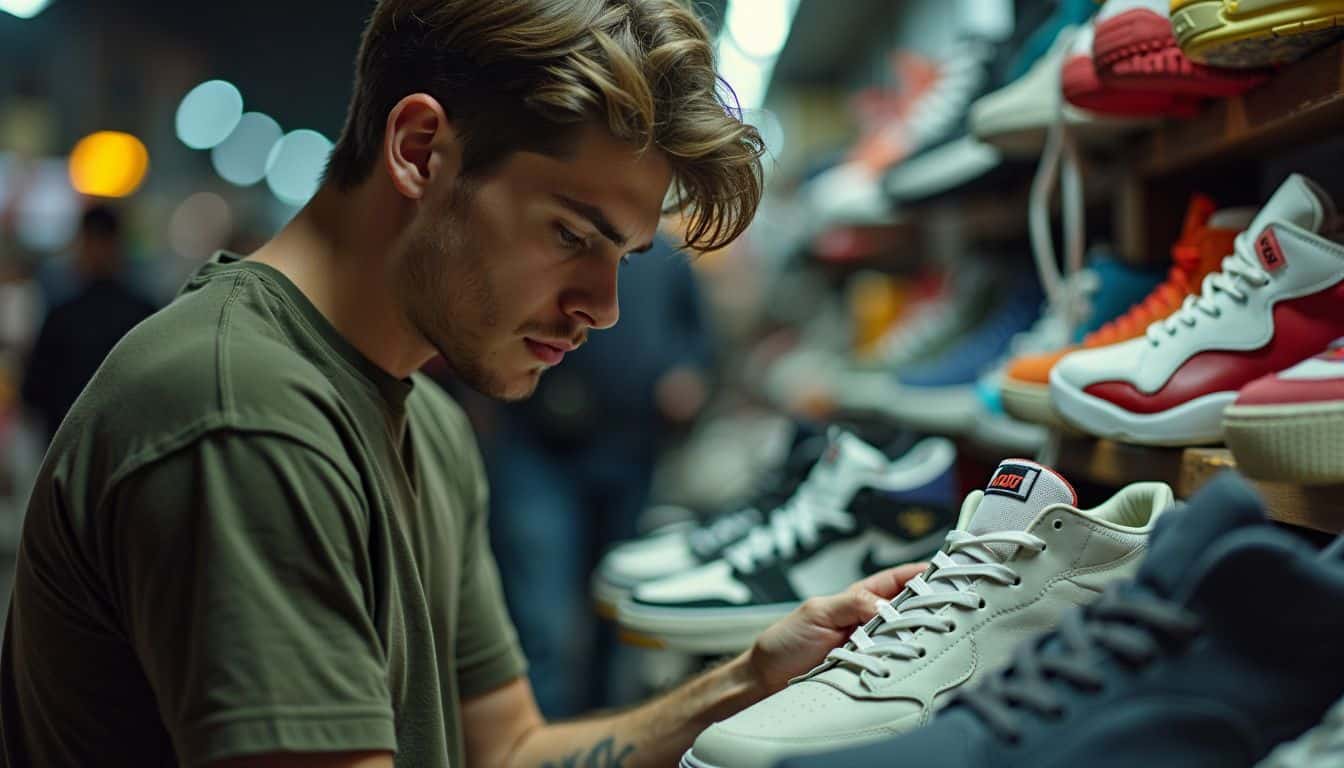
Buying rep shoes can be tricky. Here’s how to spot the real deal and avoid getting scammed. We’ll show you some handy tricks to check if those kicks are legit or not.
Best Practices for Authenticating Rep Footwear
Spotting real from fake shoes can be tricky. Here are some top tips to help you authenticate rep footwear:
- Check the overall build quality. Look for neat stitching and even seams. Sloppy work often means a fake. 11
- Compare colors carefully. Match the shades to official photos. Knock-offs may use slightly off hues.
- Inspect logos closely. The Nike Swoosh should be crisp and well-placed. Fuzzy or wonky logos are red flags. 5
- Examine the box label. Fonts and spacing should match legit versions. Fakes often have small errors here.
- Study the size tag inside. Check for correct font and alignment. Counterfeiters sometimes mess this up.
- Feel the materials. High-end shoes use quality fabrics. Cheap-feeling stuff hints at a perfect pair of shoes that’s not so perfect.
- Smell the shoe. Yes, really! Authentic kicks have a distinct scent. Fakes may smell odd or chemical-like.
- Use a black light. Some brands add hidden marks that glow under UV. No glow could mean no good.
- Check for a sturdy structure. Quality shoes hold their shape. Flimsy construction screams counterfeit.
- Compare weights. Real shoes often feel heavier than fakes due to better materials.
Tools and Resources for Shoe Verification
Shoe verification can be tricky, but there are tools to help. Here’s a list of resources to spot real from fake kicks:
- Authentication apps: Download apps like CheckCheck or Legit Check App. These let you snap pics of your shoes and get expert opinions fast. 12
- Brand websites: Visit official brand sites to compare your shoes. They often show close-up photos and key details of genuine products.
- Online forums: Join sneaker communities like Reddit’s r/Repsneakers. Members share tips and can help spot fakes. 5
- UV light: Use a blacklight to check for hidden stamps or markings. Authentic shoes often have special UV-visible features.
- Magnifying glass: Look closely at stitching, logos, and materials. A good magnifier helps spot tiny flaws in rep shoes.
- Professional services: Send your shoes to experts like Hype Authentication Service. They’ll give you a detailed report on authenticity.
- YouTube tutorials: Watch videos by sneakerheads on how to spot fakes. They often show side-by-side comparisons.
- Smell test: Weird as it sounds, fake shoes often smell different. Give ’em a sniff – if it’s off, be wary.
Now that you know how to check your kicks, let’s talk about the legal side of rep shoes.
People Also Ask
What exactly are rep shoes?
Rep shoes are knock-off products that mimic name-brand footwear. They’re part of the sneakerhead culture and often fool even sharp-eyed fans. These copies aim to look just like the real deal, from the outsole to the insole.
How do rep shoes impact the fashion industry?
Rep shoes are a thorn in the side of the footwear industry. They’re a form of piracy that hurts brand identity and eats into profits. Big names in luxury items are always on the lookout for these fakes.
Can you spot a rep shoe from the real thing?
It’s tricky! Counterfeiters are getting craftier. Look closely at the trademark symbols, registered trademark signs, and overall legibility of the branding. The devil’s in the details – like how bold the font weight is on labels.
Are rep shoes always cheaper than authentic ones?
Usually, yes. But watch out! Some counterfeits are priced close to the real deal to seem legit. They might pop up in your targeting cookies or social media adverts, looking tempting. Don’t be fooled by a price tag alone.
References
^ https://www.youtube.com/watch?v=UOLSEONXfds
^ https://www.redpoints.com/blog/fake-vs-replica/ (2024-03-28)
^ https://www.britannica.com/topic/history-of-sneakers
^ https://mavesapparel.com/blogs/fashion-brainstromers/what-does-reps-mean-in-the-shoe-industry?srsltid=AfmBOoql7vog11rqRaemFfriS57r_b2Jm357lj3WEsm6vUKxpfGJrFJ8 (2024-03-19)
^ https://www.wikihow.com/What-Are-Rep-Shoes
^ https://medium.com/@rosegil_71173/how-to-differentiate-between-authentic-and-replica-shoes-be9d618ac3e0
^ https://www.youtube.com/watch?v=Ftqd2TlKtpo
^ https://medium.com/@BlogsPulse/breaking-down-the-ethics-of-wearing-replica-shoes-1bcd8dea7724
^ https://medium.com/the-courtroom/customs-or-counterfeits-understanding-the-ethics-and-legality-of-custom-sneakers-1ce39854ffc8
^ https://medium.com/@foahnichter/sneaker-reselling-legality-morality-ethicality-2b9263827fcd
^ https://www.poizon.com/article/best-reps-shoes?srsltid=AfmBOoo3w5lq2q344umeCEGcjIWjGa1oaOq-h0ggaitWEAsN2JmM97KH (2024-08-26)
^ https://code.streamrepublic.com/columbushollom/reps-shoes3034/issues/5
